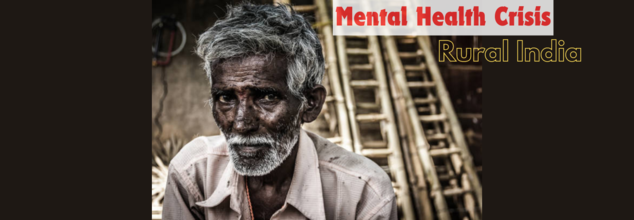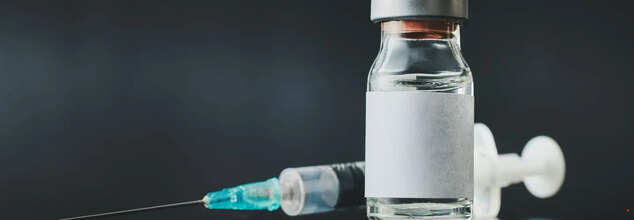
Source: iStock
Mental Health Crisis In India: Can Antistigmatisation And Digital Tools Combat The Growing Healthcare Challenges? Influencing Factors, Intervention And Policy Implementation
In the bustling villages and serene landscapes of rural India, a silent crisis unfolds—a staggering 150 million people need mental health care. Yet, with limited access to affordable and effective mental health services, particularly in remote areas, the challenge to address this crisis is immense.
However, a recent study published in JAMA Psychiatry offers a beacon of hope, highlighting the potential of innovative interventions to combat this issue.
The cluster randomized clinical trial, conducted from September 2020 to December 2021, was a collaborative effort involving 44 rural primary health centers across three districts in the states of Haryana and Andhra Pradesh. Researchers sought to determine whether a combination of an antistigma campaign and a mobile technology-based electronic decision support system could reduce depression risk and mental health-related stigma among adults in rural India.
This trial included 9,928 eligible participants, out of which 3,365 were identified as high-risk individuals based on their scores from validated mental health assessments.
Mental Health Crisis In India: Intervention and Implementation
The study was meticulously designed to include two core components in the intervention strategy:1. Community-Based Antistigma Campaign
This component was implemented across all participants, regardless of their risk level. The campaign aimed to address the prevalent stigma associated with mental health issues in rural communities. Through education and awareness initiatives, the campaign sought to dismantle misconceptions and encourage open discussions about mental health.
2. Digital Mental Health Intervention
This targeted intervention was exclusively for participants identified as high-risk. Primary health care workers received training based on the Mental Health Gap Action Programme guidelines from the World Health Organization. Using a mobile technology-based electronic decision support system, these healthcare workers could better identify, monitor, and manage high-risk individuals, providing them with tailored care and support.
After a 12-month period, the results of the study were telling. The intervention group, which received the multifaceted mental health care approach, demonstrated a significant decrease in depression severity among those who received the intervention.
Despite the promising outcomes in terms of reducing depression, the study found no significant difference in the mean behavior scores related to mental health knowledge, attitude, and behavior across both the high-risk and non-high-risk cohorts.
This highlights a gap in the intervention’s effectiveness in altering help-seeking behaviors, suggesting a need for additional strategies to encourage proactive engagement with mental health services.
What this Means for the Mental Healthcare Future in India?
The findings of this study carry profound implications for the future of mental health care in rural India. By leveraging a combination of community-based antistigma efforts and digital health solutions, there is an opportunity to make meaningful strides in improving mental health outcomes for underserved populations.The success of the intervention underscores the importance of integrating technology and local community resources in addressing mental health needs.
Moving forward, it is essential to build upon the lessons learned from this study to refine and expand intervention strategies. Efforts should focus on enhancing the impact of mental health education and encouraging help-seeking behaviors among rural communities. Additionally, scaling up such interventions could play a pivotal role in bridging the mental health care gap in India’s rural regions.
Addressing Mental Health Challenges in Rural India
Mental health issues among India's youth are escalating at an alarming rate. According to the World Health Organization (WHO), the prevalence of depression and anxiety among young adults aged 18-24 rose from 9.3% in May 2020 to 16.8% by March 2022. This troubling trend continued into 2023, with around 25% of individuals in the 18-25 age group now exhibiting signs of depression, and nearly 30% struggling with anxiety disorders.Factors Influencing Mental Health Crisis in India
According to one NIH research study titled 'A Comprehensive Analysis of Mental Health Problems in India and the Role of Mental Asylums', there ae several social and cultural factors contribute significantly to the mental health crisis in India:Societal Stigma and Discrimination: Mental illness carries a heavy stigma in Indian society, rooted in misconceptions and fear. This stigma often results in discrimination and social exclusion, making individuals hesitant to seek help due to fear of judgment and rejection. Consequently, delayed treatment exacerbates their conditions, further entrenching mental health issues.
Gender Inequalities: Gender disparities profoundly affect mental health, particularly for women who face unique challenges such as domestic violence, sexual abuse, and societal expectations. These factors, compounded by socioeconomic and caste-related issues, increase stress and vulnerability to mental health disorders among women.
Poverty and Socioeconomic Factors: Poverty exacerbates mental health issues, with limited access to healthcare and essential support systems contributing to heightened psychological distress. Financial instability and poor living conditions further stress individuals, amplifying their risk of mental health problems.
Rapid Urbanization and Migration: Urbanization and migration disrupt traditional support networks and increase competition and stress, leading to a rise in mental health issues. The migration process often results in social dislocation and instability, exacerbating mental health challenges.
Family Dynamics and Societal Pressure: Pressure related to education, career success, marriage, and gender roles can cause significant stress. Dysfunctional family dynamics and societal expectations can further strain mental well-being, with stigma often leading to a lack of understanding and support within families.
Cultural Beliefs: Varying cultural beliefs about mental illness across different regions can influence help-seeking behaviors and treatment approaches. Sometimes, these beliefs can discourage open discussions and promote ineffective remedies, hindering access to evidence-based care.
Access to Mental Healthcare In India
The NIH study highlights how the access to mental healthcare in India is impeded by several factors, to name a few:1. There is a notable shortage of psychiatrists, psychologists, and psychiatric nurses, particularly in rural areas. This scarcity creates barriers to timely and effective mental health care.
2. Mental healthcare facilities often lack the necessary resources and infrastructure, especially in rural regions. This deficit limits the capacity to provide comprehensive care and address diverse needs.
3. Limited awareness and pervasive stigma result in underutilization of mental health services. This stigma prevents open discussion and timely treatment.
4. Mental health services are often not well integrated into primary healthcare systems, leading to a fragmented approach that hinders early detection and continuity of care.
As the mental health crisis continues to evolve, particularly in rural and underserved areas, innovative and accessible solutions are crucial. This study serves as a significant step forward in the quest to provide comprehensive mental health care to all, regardless of geographic or socio-economic barriers.
With continued efforts and strategic interventions, the vision of a mentally healthy and stigma-free rural India can become a reality.

World Health Day 2025 Puts Maternal And Newborn Health In Focus- Know Theme And Significance
Every year on April 7, World Health Day commemorates the establishment of the World Health Organization (WHO) in 1948. But more than a symbolic date, it is a brazen call to tackle pressing global health challenges. In 2025, the focus has shifted toward an issue central to human development and survival—maternal and newborn health.
This year’s theme, “Healthy Beginnings, Hopeful Futures,” isn’t just a slogan—it signals the beginning of a year-long WHO-led campaign that prioritizes the well-being of mothers and babies. In a world where nearly 300,000 women die each year from pregnancy-related causes and over 2 million newborns don't survive their first month, the message is loud and clear: we must act now.
Mothers' and babies' health isn't a women's issue—it's a global, family, and community issue. A healthy start in life is the foundation for future prosperity and health. If a mother lives through childbirth, if her newborn baby survives that critical neonatal period, the ripple effect reverberates out to the rest of society. Healthy children grow up with their mothers, which builds healthier communities and economies.
However, the global data is still grim. WHO estimates suggest that one preventable maternal or newborn death occurs every 7 seconds. Worse, 4 out of 5 nations are off track to achieve maternal survival goals by 2030, and 1 in 3 are at risk of failing to meet newborn death reduction targets.
What Does 'Healthy Beginnings, Hopeful Futures' Mean?
The WHO's campaign in 2025 will be aimed at preventing not just deaths but also making health systems more robust, pushing for equity, and providing women and newborns with quality care before, during, and after birth.
Important goals of this year's campaign are:
- To advocate for eliminating preventable newborn and maternal deaths
- To push for equitable access to quality care, particularly in rural and under-served areas
- Building postnatal care infrastructure, especially within the first 24 hours following childbirth—the time when the majority of maternal and newborn deaths are most likely to happen
- Facilitating mental health and noncommunicable disease care during the perinatal period
- Fostering inclusive laws and policies that protect women's health and rights
Understanding the Challenges
Consider India, for instance—a country that has progressed incredibly but continues to have mountainous challenges to overcome. India's maternal mortality ratio fell from 130 to 97 per 100,000 live births between 2014 and 2020. Yet the country still has 17% of all stillbirths and maternal deaths worldwide, a stark reminder of how much there is to be done.
In rural and disadvantaged communities, the availability of healthcare workers, postnatal care facilities, and emergency obstetric care remains very limited. A great number of infant deaths are due to preventable conditions such as sepsis, birth asphyxia, and conditions arising from preterm birth. Socioeconomic inequalities worsen these conditions, with women in poorer families frequently having no access to even basic maternal care.
What Needs to Change?
Enhancing newborn and maternal health is more than constructing hospitals—it's a matter of envisioning healthcare delivery systems that are sustainable, equitable, and women-focused.
That means:
- Increasing antenatal and postnatal care coverage to at least 80% as recommended by the WHO
- Training and mobilizing skilled birth attendants in underserved areas
- Establishing mother-supportive environments, such as clean water, adequate sanitation, and nutrition access
- Synchronizing mental health services with maternity care
- Securing policy-level protection by way of maternity benefits, parental leave, and anti-discrimination laws
Furthermore, health systems should also be in a position to handle indirect determinants of maternal death, like hypertension, diabetes, and mental illnesses, which are all underdiagnosed.
India's Pradhan Mantri Surakshit Matritva Abhiyan (PMSMA) and National Health Mission (NHM) have played a significant role in providing free monthly check-ups and institutional births. Programs such as Janani Suraksha Yojana (JSY) offer incentives to poor mothers to deliver safely.
Internationally, some areas such as Latin America and the Caribbean have already achieved WHO's goal of postpartum care coverage of 80%—serves as models that can be followed and replicated.
This year's theme also acknowledges that health is not born in clinics. It is a result of underlying human rights—education, decent shelter, wholesome food, clean air, and protection from violence and discrimination.
Policies that make women economically and socially empowered are as essential as policies for medical care. Whether legal protections for maternal leave or investing in girl child education, each move makes a difference to healthier generations.
Listening to Women, Supporting Families
At the center of this campaign is a crucial message—listen to women. Women require care that is respectful, compassionate, and inclusive. That means acknowledging the role of partners and families, supporting fathers, and providing community-based solutions that are responsive to cultural and socioeconomic settings.
Healthcare professionals, policymakers, and world leaders need to make listening to women's voices a priority, learn from their experiences, and co-create solutions that are effective on the ground.
As World Health Day 2025 unfolds, it calls on all of us—governments, health workers, communities, and individuals—to pledge ourselves to the health and dignity of mothers and newborns. Because when we invest in healthy beginnings, we create hopeful futures—not only for individuals, but for generations to come.

Credit: Canva
Measles Cases Double In US: Should You Get The Vaccine Now?
US now has more than double the number of measles cases it saw in all of 2024, with Texas reporting another large jump in cases and hospitalizations on Friday. Other states with active outbreaks — defined as three or more cases — include New Mexico, Kansas, Ohio and Oklahoma. The virus has been spreading in 'undervaccinated' communities, and since February, two unvaccinated people have died from measles-related causes.
The multi-state outbreak confirms health experts' fears that the virus will take hold in other U.S. communities with low vaccination rates and that the spread could stretch on for a year. The World Health Organization said last week that cases in Mexico are linked to the Texas outbreak.
Should You Get The Measles Booster Shot?
Measles is caused by a highly contagious virus that's airborne and spreads easily when an infected person breathes, sneezes or coughs. It is preventable through vaccines and has been considered eliminated from the U.S. since 2000.
The best way to avoid measles is to get the measles, mumps and rubella (MMR) vaccine. The first shot is recommended for children between 12 and 15 months old and the second between 4 and 6 years old.
People at high risk for infection who got the shots many years ago may want to consider getting a booster if they live in an area with an outbreak, said Scott Weaver with the Global Virus Network, an international coalition. Those may include family members living with someone who has measles or those especially vulnerable to respiratory diseases because of underlying medical conditions.
Adults with “presumptive evidence of immunity” generally don’t need measles shots now, the CDC said. Criteria include written documentation of adequate vaccination earlier in life, lab confirmation of past infection or being born before 1957, when most people were likely to be infected naturally.
A doctor can order a lab test called an MMR titer to check your levels of measles antibodies, but health experts don't always recommend this route and insurance coverage can vary. Getting another MMR shot is harmless if there are concerns about waning immunity, the CDC says.
People who have documentation of receiving a live measles vaccine in the 1960s don’t need to be revaccinated, but people who were immunized before 1968 with an ineffective measles vaccine made from “killed” virus should be revaccinated with at least one dose, the agency said. That also includes people who don’t know which type they got.

Credit: Canva
FDA Delays Approval Of Novavax COVID-19 Vaccine
The U.S. Food and Drug Administration (FDA) has postponed granting full approval to Novavax’s COVID-19 vaccine. The decision, which was anticipated by April 1, has been deferred as the agency says it requires additional information before proceeding.
While the Novavax vaccine is currently available under emergency use authorization, full approval by the FDA would pave the way for broader use and potentially reassure individuals seeking alternatives to mRNA vaccines, according to CNN.
This delay coincides with efforts by Republican lawmakers in at least seven U.S. states to restrict or ban mRNA vaccines. As reported by KFF Health News, some of these legislators are also urging federal regulators to revoke approval for mRNA-based COVID vaccines—shots that former President Donald Trump highlighted as a major achievement of his administration.
Unlike the mRNA vaccines developed by Pfizer and Moderna, Novavax uses a protein-based platform, a more traditional vaccine approach.
“As of Tuesday, April 1, we had responded to all of the FDA’s information requests and we believe that our [Biologics License Application] is ready for approval,” the company stated. Novavax added that the application “included robust Phase 3 clinical trial data that showed our vaccine is safe and effective for the prevention of COVID-19.”
The company also said it remains confident its “well-tolerated vaccine represents an important alternative to mRNA COVID-19 vaccines for the U.S.”
The delay follows leadership changes within the FDA. Dr. Scott Steele has been appointed acting director of the agency’s vaccine division after Dr. Peter Marks stepped down last month.
Meanwhile, U.S. Department of Health and Human Services (HHS) Secretary Robert F. Kennedy Jr.—a longtime vaccine opponent—has continued to circulate false claims about COVID vaccines and recently shared misleading information about the measles vaccine amid a deadly outbreak.
An HHS spokesperson told CNN that the FDA’s evaluation of the Novavax vaccine, like all vaccines, is undergoing an independent review process.
© 2024 Bennett, Coleman & Company Limited

